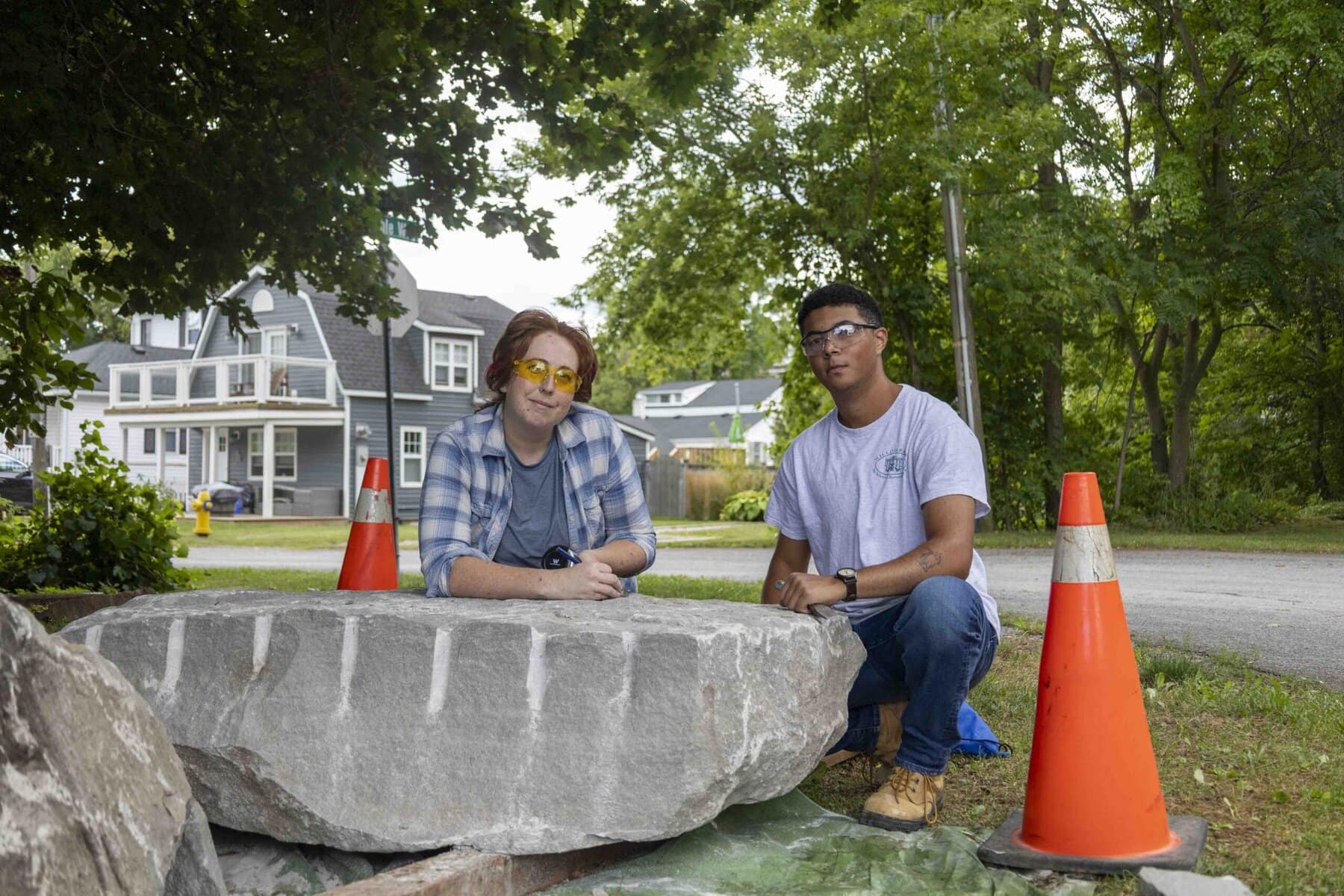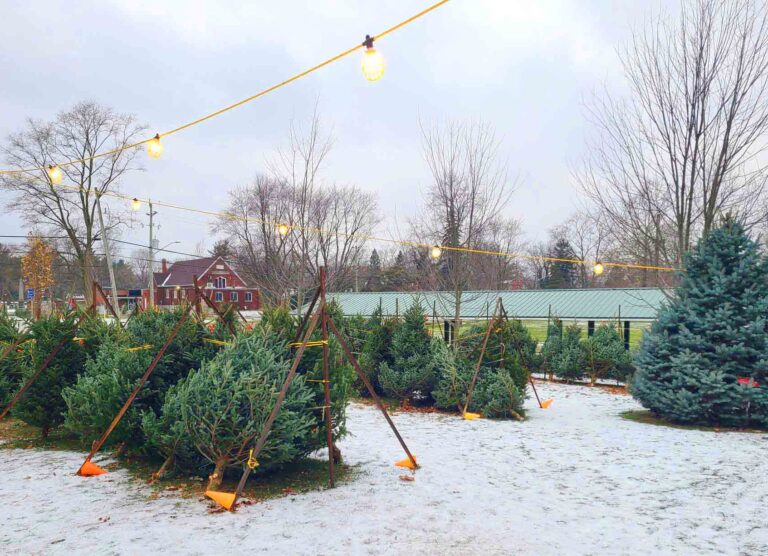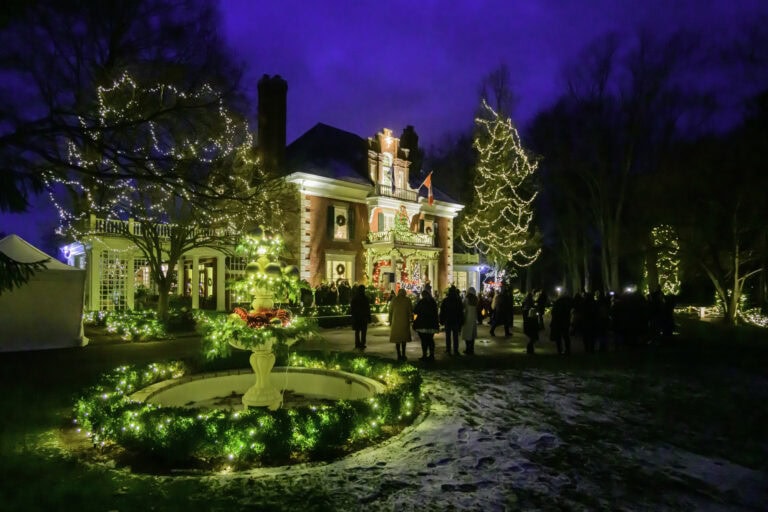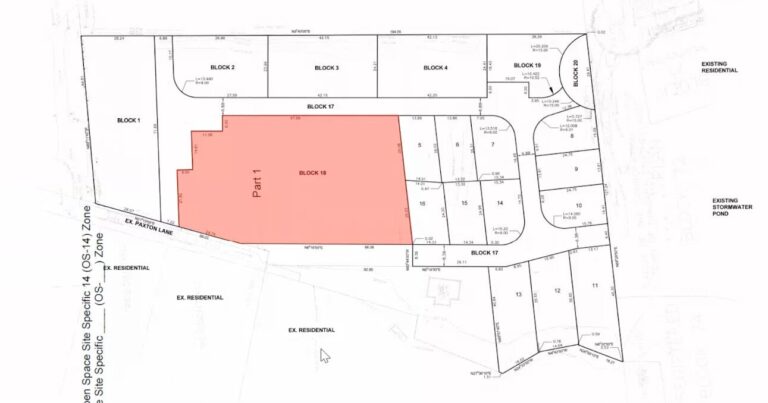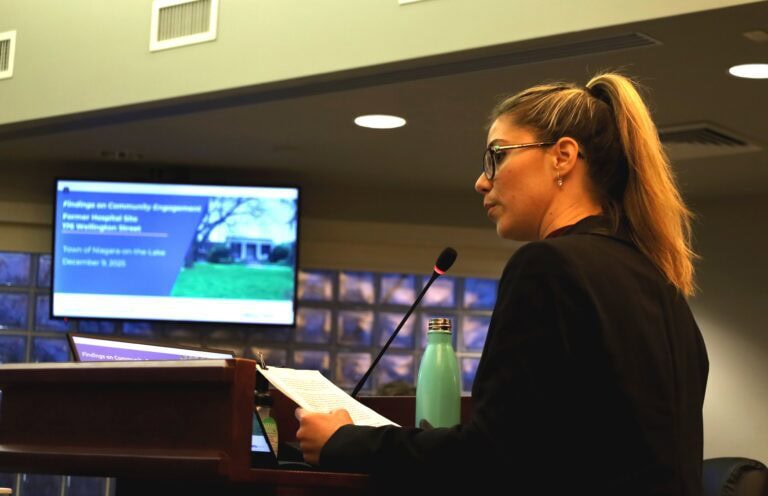The restoration of Niagara-on-the-Lake’s 1850s railway turntable is now two-thirds complete.
Town staff reinstalled four original stones on Aug. 25, uncovering a long-lost rail detail in the process.
The project team aims to complete the turntable ring and a road integration plan by 2026.
The site was capped with soil and seeded, Lockhart Street was cleared of stones and surplus rock from River Beach was stacked under trees by Aug. 26 — all without disturbing the nearby Cogeco TV cable.
The team is made up of NOTL residents, Ron Simkus, a director with the Niagara-on-the-Lake Residents Association, Queenston Quarry Reclamation Company president Frank Racioppo, town staff and two Willowbank School of Restoration Arts students.
Simkus, a passionate volunteer on the project, said he appreciates how NOTL road supervisor Casey Sharpe and his team, led by Rick Nauta, has been treating the site with respect for its history.
He said he’s also thankful for the town’s engagement, enthusiasm and for handling the heavy lifting. It’s “actually keen about this” initiative, he added.
The Aug. 25 discovery included the original concrete pedestal and a section of curved rail once used to guide bridge wheels as locomotives spun on the turntable.
With no drawings or photographs of the feature ever found on record, staff carefully salvaged the rail for future display, said Simkus.
“It’s been better than expected actually,” said Willowbank student Malcolm Williams about the project. “This came apart really nicely.”
Students continued cutting and shaping stones for the restoration on Friday — student Meghan Rist said the team had to learn new methods along the way.
“The actual wedge and feather, or feather and pin, is a new technique we haven’t used before, so we got to do a lot of research,” she said, adding they went into the school’s library for reference when they needed to.
“It feels great to actually get our hands on Queenston Limestone,” Rist said.
“Working with a natural material of this area, that was so important to the growth of this area, is — as a stone person — really cool for me.”
“It is just not a stone that is available anymore,” she said.
Williams said one of the highlights has been engaging with the community.
“They’re very interested in this project, which is a really nice, fun thing for us to do,” he said.
Three original stones remain in reserve, with another 13 set to be fabricated from raw Queenston Quarry Reclamation rock — made possible by a donation from Racioppo.



